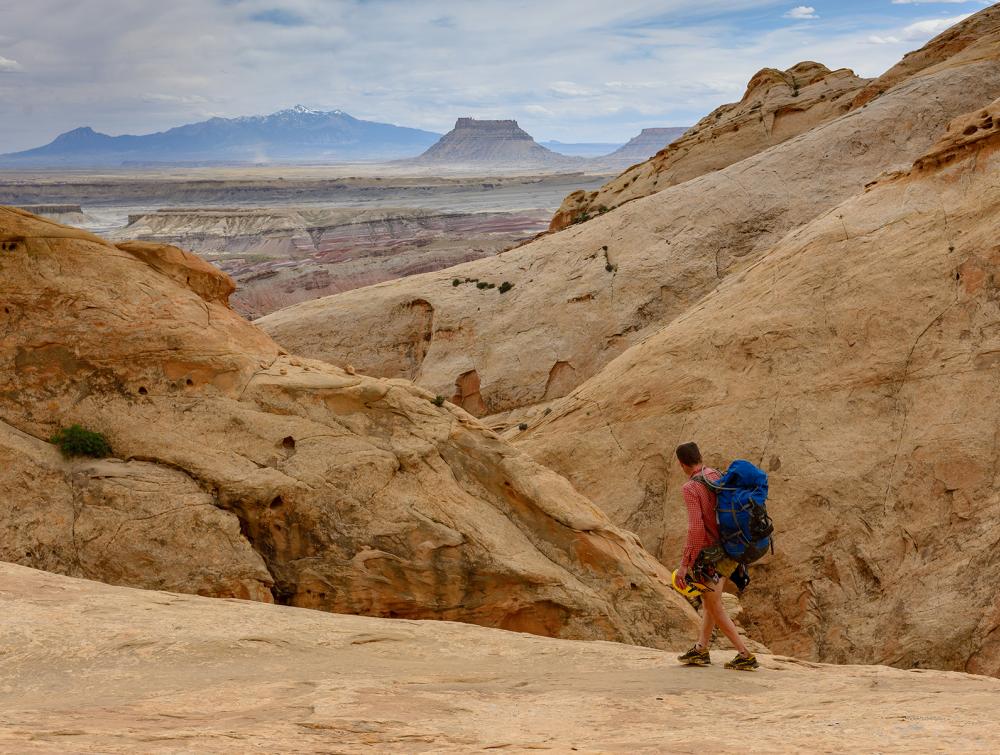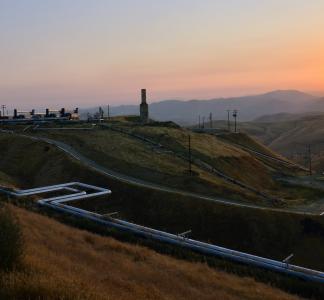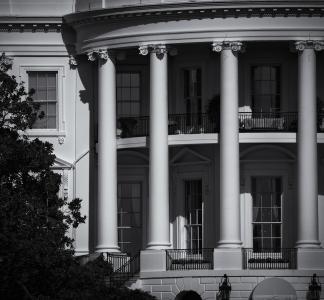What in the Fishtrap Recreation Area is this conservation rule all about?

San Rafael Swell Recreation Area, UT
Benj Wadsworth
What is this “BLM” everyone is talking about?
There’s a scene in the first season of HBO’s The White Lotus where queer icon Jennifer Coolidge’s character thinks a handsome stranger — an older white man played by Jon Gries — works for the Black Lives Matter movement after he introduces himself as a “BLM” man. After an awkward conversation, she realizes he actually works for the U.S. Bureau of Land Management, which she is completely unfamiliar with.
Part of what makes the bit work so well is that most people are similarly unfamiliar with the Bureau of Land Management (BLM, henceforth). Of the many divisions within the Department of the Interior, BLM certainly ranks among the least immediately comprehensible. However, the agency has a tremendous impact on the public lands we benefit from in the United States.
BLM manages more land than any other government agency: a whopping 245 million acres, about 1/10th of the country’s total landmass. Established in 1946, the bureau is charged with maintaining balanced stewardship of public lands — places like Fishtrap Recreation Area in Washington, Wyoming’s Red Desert and Guadalupe Canyon Wilderness Study Area — for multiple uses. In other words, it is supposed to ensure the land it manages is used equitably and sustainably for recreation; energy development and resource extraction; and conservation of lands and waters.
That makes sense, but what’s the problem?
Despite its mission, the agency’s management has been far out of balance for decades. Analysis has shown that 90% of BLM lands are open to oil and gas leasing, meaning an overwhelming majority of lands could be permitted and developed for fossil fuel projects. The recent approval of the disastrous Willow project on BLM land in the Western Arctic is a crystal-clear message that the agency’s current priorities are out of sync with the worsening climate crisis.
But the issues with current management of BLM lands extend beyond fossil fuel leasing. Mining, logging, grazing and similar uses are currently prioritized above landscape conservation. Even in undeveloped stretches, lack of protection means that abusive use of lands for illegal shooting or improper off-roading goes unregulated.
These issues may seem small, but as symptoms of a larger disease they are taking a heavy toll. The world is facing down a series of serious natural crises, including mass extinction exacerbated by climate changes and habitat destruction. As species and landscapes are lost, our shared ecosystem destabilizes, causing rippling impacts to public wellbeing.
In the United States, the abuse of our public lands is fragmenting the natural habitats that beloved North American species rely on and contributing to extinction; it is damaging healthy forests and, in turn, harming air and water quality; it is destroying Indigenous cultural sites and sacred landscapes. Without adequate conservation, we are not only failing to protect our treasured landscapes but actively contributing to their degradation.
Yikes! What can we do about this?
There’s good news! A newly proposed plan from BLM and the Department of the Interior has the potential to correct this imbalance by putting conservation on “equal footing with other uses.” The proposal, called the Public Lands Rule, directly responds to the natural crises facing us with new tools and policies to conserve wildlife habitat, restore healthy landscapes, partner and consult with Indigenous tribes, expand outdoor access and ensure thoughtful energy development.
But this proposal is not an official, approved rule yet: we need people across the United States to join us in urging the Bureau of Land Management to make this proposal as strong as possible before it is finalized! Specifically, we want to see the agency prioritize protecting connected and intact landscapes for wildlife; directing local BLM managers to work with local communities to ensure conservation; targeting old-growth and mature forests for preservation; and further improving Tribal consultation and co-stewardship practices.
Please, take a brief moment to send BLM a comment supporting a strong conservation policy. This once in a generation opportunity has the potential to make a seismic shift in public policy in both the near and long term. Indeed, the choices BLM makes now will have far reaching implications in the climate and nature crises. You’ve already read this far — it will only take a few seconds more to help protect our lands for generations to come!
BLM has also announced a series of public meetings will be held for members of the public to learn more about the the proposal and voice support:
- Virtual Meeting — May 15, 5 pm MT
- Denver West Marriott, Denver, CO — May 25, 5 pm MT
- Indian Pueblo Cultural Center, Albuquerque, NM — May 30, 5 pm MT
- Reno-Sparks Convention Center, Reno, NV — June 1, 5 pm PT
- Virtual Meeting — June 5, 9:30 am MT


